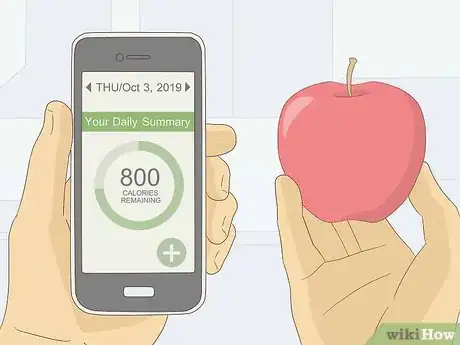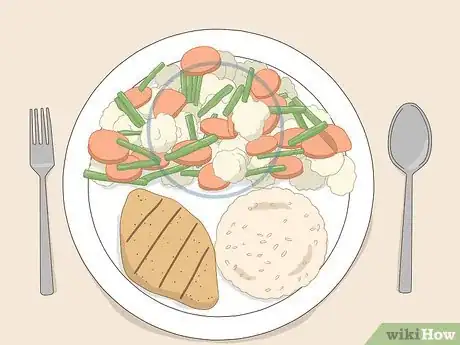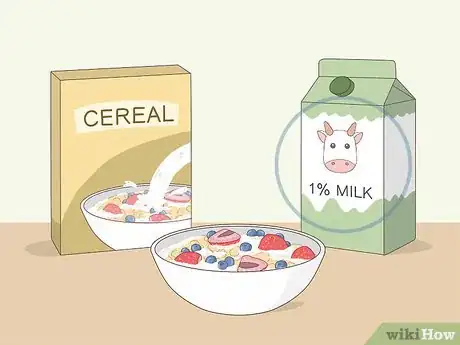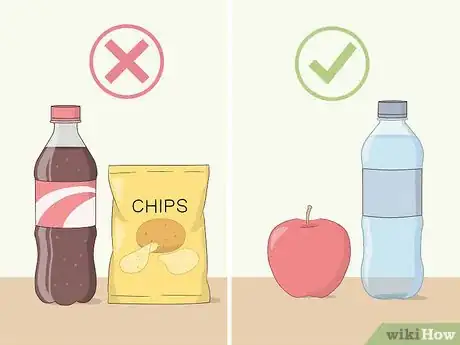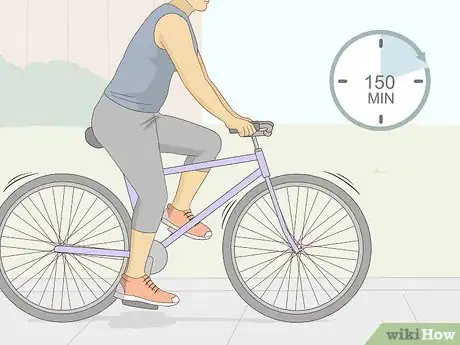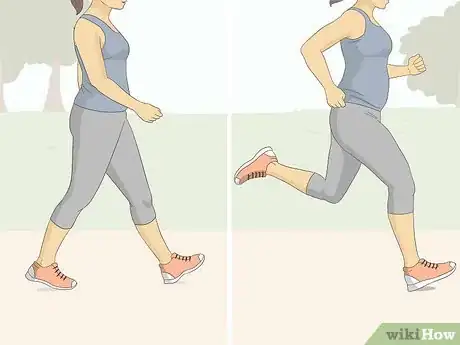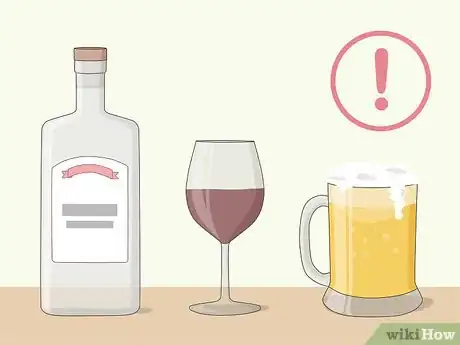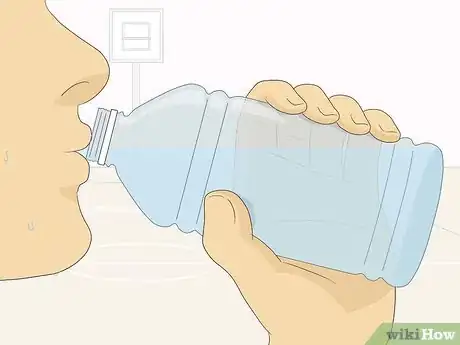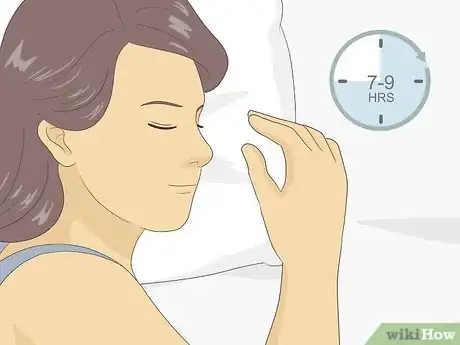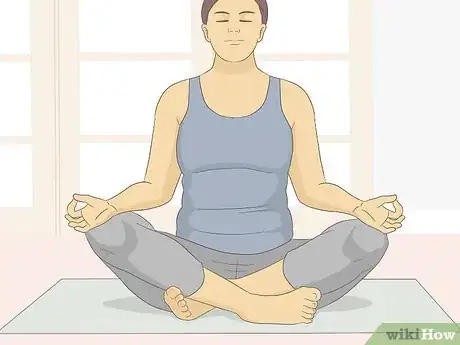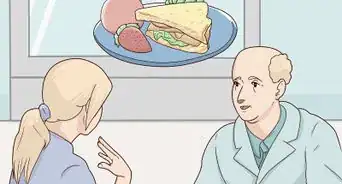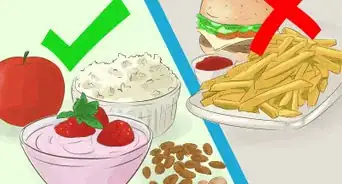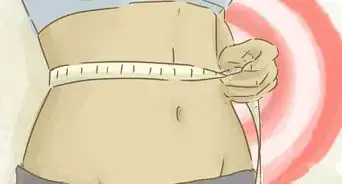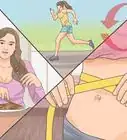This article was co-authored by Pouya Shafipour, MD, MS. Dr. Pouya Shafipour is a Family Medicine Specialist, Primary Care Physician, and a Weight Loss Specialist based in Santa Monica, California. Dr. Shafipour specializes in dietary, nutritional, behavioral, and exercise counseling to manage obesity and medical conditions related to excessive weight gain or loss. Dr. Shafipour received a BS in Molecular and Cell Biology from the University of California, Berkeley, an MS in Physiology and Biophysics from Georgetown University, and an MD from the Loma Linda University School of Medicine. He completed his internship in general surgery at UC Irvine and a residency in family medicine at the University of California, Los Angeles, and became board certified in family medicine in 2008.
There are 15 references cited in this article, which can be found at the bottom of the page.
wikiHow marks an article as reader-approved once it receives enough positive feedback. In this case, 91% of readers who voted found the article helpful, earning it our reader-approved status.
This article has been viewed 1,185,856 times.
Losing 15 lb (6.8 kg) in 2 weeks, or 7.5 lb (3.4 kg) per week, would require creating a daily deficit of about 3,500 calories. To achieve this, you'd need to adopt an extremely low-calorie diet and do lots of vigorous exercise every day, so it’s not recommended. Losing between 1–2 lb (0.45–0.91 kg) per week is considered a healthier rate of weight loss. This requires burning 500 to 1,000 calories more than you eat in a day.[1] However, if you want to lose weight quickly due to an upcoming event, there are some strategies you can try to boost your weight loss results. Reduce your daily caloric intake to create a daily deficit and move more to increase the amount of calories you burn each day. You can also incorporate healthy lifestyle changes to help you reach your goals.
Steps
Adjusting Your Diet
-
1Track what you eat with a food diary or app. To create a caloric deficit, you’ll need to keep track of everything that crosses your lips. Using an app or food diary is the best way to do this. Record everything you eat in your app or food diary. Aim for a goal of 1,200 calories per day if you’re a woman or 1,500 calories per day if you’re a man.[2]
- Try to track what you eat or drink right after you eat it so that you won’t forget about it. Or, if you know what you’re going to be eating in advance, put it in your tracker ahead of time. This can also help you to budget your calories and spread them evenly among your meals and snacks.
- Keep in mind that it doesn’t matter if you follow a low-fat diet or a low-carb diet. Both approaches to weight loss are equally effective, so choose the option that works best for you.[3]
-
2Eat 2 to 3 servings of fruits and vegetables at every meal. Fruits and vegetables are lower in calories than most other foods, and they’re filling because they’re high in fiber. By eating more fruits and vegetables with every meal, you’ll be cutting calories and satisfying your hunger in a healthy way.[4]
- Aim to fill half of your plate with fruits or vegetables at each meal. For example, you could have 2 cups of melon with your morning toast and eggs, a green salad with a bowl of minestrone soup at lunch, and 2 cups of mixed steamed vegetables with skinless chicken breast and brown rice for dinner.
Tip: Avoid adding butter or oil to your vegetables. This will increase the calories in your meal. Try seasoning your vegetables with herbs, spices, vinegar, and lemon juice instead.
Advertisement -
3Include 2 to 3 daily servings of low-fat dairy. Eating low-fat dairy products as part of a reduced calorie diet has been shown to promote weight loss. Include 2 to 3 servings of low-fat milk, yogurt, or cheese in your daily diet.[5]
- For example, you could have 8 fl oz (240 mL) of 1% milk with your morning bowl of cereal, have a slice of low-fat cheese on a turkey sandwich at lunch, or enjoy ½ cup (120 g) of low-fat cottage cheese with your pasta and marinara sauce for dinner.
-
4Eat spicy foods for increased metabolism. The capsaicin in spicy foods helps to rev up your metabolism, which might help you to lose weight and keep it off. Include hot peppers, salsa, and spices made from chilies to incorporate more capsaicin in your diet.[6]
- For example, you could sauté a couple of jalapenos with onions as a starter for chili, add a couple of tablespoons of hot salsa to a burrito, or add a dash of cayenne pepper to season baked chicken.
-
5Swap high-calorie foods for lower calorie options. Making small changes can add up in your total daily caloric intake. If you find that many of your extra calories come from beverages, switch to water or another lower calorie option. If you often snack on junk food throughout the day, trade chips and candy for fresh fruit and veggie slices.[7]
- Beverages are a major culprit of excess calories. Consider how many glasses of juice, soda, and other sweetened drinks you consume during the day. If you’re drinking 24 fl oz (710 mL) in juice and soda each day, this is about 400 extra calories that you could eliminate if you switched to water.
-
6Try intermittent fasting to increase weight loss. Intermittent fasting has been shown to increase weight loss. To do an intermittent fast, schedule your meals so that they will fall within the same 8 or 10 hour window each day. Then, don’t eat between the end of the window on one day and the start of the window on the next day.[8]
- For example, if you make your window 7:00 am to 3:00 pm each day, you might eat breakfast at 7:00 am, lunch at 11:00 am, and dinner at 3:00 pm. Then, you wouldn’t eat again until 7:00 am the following day.
Exercising for Weight Loss
-
1Move more throughout the day to burn more calories. Staying as active as possible can help you to burn more calories and lose more weight. Even small additions to your normal physical activity can add up. Increase the total amount of calories you burn each day by:[9]
- Walking or riding your bike to run errands
- Parking further away from entrances
- Hopping off the bus a few blocks before your stop and walking the rest of the way
- Taking the stairs instead of the elevator
- Doing squats or jumping jacks during commercial breaks when you’re watching TV
-
2Aim for 150 minutes of moderate cardiovascular exercise every week. This is the minimum recommended amount of cardiovascular exercise for general health, but getting at least this amount is important for weight loss. Choose a form of exercise that you enjoy and work it into your daily routine on most days.[10]
- For example, you could go for a daily walk, run, or bike ride if you enjoy being outdoors. Or, if you prefer to exercise at the gym, try using an elliptical walker, taking an aerobics class, or swimming.
Tip: Keep in mind that it’s fine to break up your exercise into smaller chunks if you can’t do it all at once each day. Try doing three 10 minute or two 15 minute workouts every day instead of doing 30 minutes all at once.
-
3Incorporate strength-training to build more muscle. Having more muscle mass helps you to burn more calories even when you’re resting. Include two 30 to 45 minute strength-training sessions each week and work all of your major muscle groups during each session. These include your arms, legs, back, abdomen, buttocks, chest, and shoulders.[11]
- You can lift weights to build muscle or use resistance bands or bodyweight exercises to build strength. Choose the option that works best for you.
-
4Try high-intensity interval training to torch more calories. High-intensity interval training, also known as HIIT, is a form of exercise that alternates moderate and high intensity cardiovascular exercise. By going back and forth between the different levels of intensity in your workout, you’ll build endurance and burn more calories.[12]
- For example, you could walk for 4 minutes, then jog for 4 minutes, then walk for 4 minutes, and so on. Keep alternating between the 2 intensity levels for a total of 30 minutes.
- Many gyms offer HIIT classes. Try taking one for an extra challenging workout.
Making Other Lifestyle Changes
-
1Limit your intake of alcoholic beverages. Alcohol adds empty calories and it also lowers your inhibitions, so you end up eating more than you normally would.[13] Limit yourself to no more than 1 drink per day if you’re a woman or 2 drinks per day if you’re a man.[14]
- One alcoholic drink is 12 fl oz (350 mL) of beer, 5 fl oz (150 mL) of wine, or 1.5 fl oz (44 mL) of spirits.
-
2Drink water whenever you’re thirsty. Staying well-hydrated will help you to prevent confusing thirst with hunger, which may cause you to overeat or eat when you’re not actually hungry. Instead, drink water throughout the day and any time you get sweaty to keep yourself hydrated.[15]
- Try carrying a reusable water bottle with you wherever you go and refill it any time it gets low.
Tip: If you dislike the taste of plain water, add a lemon wedge, a few fresh berries, or a slice of cucumber to flavor it without adding lots of calories.
-
3Sleep for 7 to 9 hours every night. Being well-rested can help you to make better decisions about the foods you eat and have the energy to stick with your exercise routine. Go to bed at the same time every night and wake up at the same time each day to maintain a regular schedule. Some other things you can do to promote better sleep include:[16]
- Turning off electronic devices 30 minutes before you go to bed
- Avoiding caffeine in the afternoon and evening
- Keeping your bedroom cool, dark, and quiet
- Using your bedroom for sleep only and not working, eating, or paying bills in bed
-
4Incorporate relaxation techniques to avoid stress eating. Being overwhelmed by your life or by your desire to lose weight quickly can make you feel stressed. Stress causes some people to eat more than they normally would and this can lead to weight gain. Set aside at least 15 minutes every day to relax. Try using a relaxation technique, such as:[17]
Warnings
- Talk to your doctor before you start any weight loss program.[19]⧼thumbs_response⧽
- Don’t take weight loss pills unless they were prescribed by your doctor! There are hundreds if not thousands of products that claim to help you lose weight quickly, but most of these have not been shown to be effective.[20]⧼thumbs_response⧽
References
- ↑ https://www.mayoclinic.org/healthy-lifestyle/weight-loss/in-depth/weight-loss/art-20047752
- ↑ https://www.mayoclinic.org/healthy-lifestyle/weight-loss/in-depth/calories/art-20048065
- ↑ https://www.ncbi.nlm.nih.gov/pubmed/29466592
- ↑ https://www.ncbi.nlm.nih.gov/pmc/articles/PMC3225890/
- ↑ https://www.ncbi.nlm.nih.gov/pmc/articles/PMC3225890/
- ↑ https://www.ncbi.nlm.nih.gov/pmc/articles/PMC5426284/
- ↑ https://www.mayoclinic.org/healthy-lifestyle/weight-loss/in-depth/calories/art-20048065
- ↑ https://www.health.harvard.edu/blog/intermittent-fasting-surprising-update-2018062914156
- ↑ https://www.mayoclinic.org/diseases-conditions/obesity/diagnosis-treatment/drc-20375749
- ↑ Pouya Shafipour, MD, MS. Board Certified Family Medicine Specialist. Expert Interview. 8 May 2020.
- ↑ https://www.ncbi.nlm.nih.gov/pmc/articles/PMC2931407/
- ↑ https://www.ncbi.nlm.nih.gov/pmc/articles/PMC2991639/
- ↑ Pouya Shafipour, MD, MS. Board Certified Family Medicine Specialist. Expert Interview. 8 May 2020.
- ↑ https://www.ncbi.nlm.nih.gov/pmc/articles/PMC4338356/
- ↑ https://www.helpguide.org/articles/diets/how-to-lose-weight-and-keep-it-off.htm
- ↑ https://www.helpguide.org/articles/diets/how-to-lose-weight-and-keep-it-off.htm
- ↑ https://www.ncbi.nlm.nih.gov/pubmed/23512679
- ↑ https://www.ncbi.nlm.nih.gov/pubmed/30335479
- ↑ Pouya Shafipour, MD, MS. Board Certified Family Medicine Specialist. Expert Interview. 8 May 2020.
- ↑ https://ods.od.nih.gov/factsheets/WeightLoss-HealthProfessional/
About This Article
To lose 15 pounds in 2 weeks, try to eliminate sugar and carbohydrates, like bread and pasta, from your diet as much as you can. Instead, eat lots of lean proteins, like chicken or fish, and vegetables. Also, drink a lot of water to fill you up and improve your mood and energy levels. In addition to changing your diet, do low-impact exercise, such as walking or swimming, to burn extra calories without wearing you out. For tips on how to meal plan to help you lose weight fast, read on!
